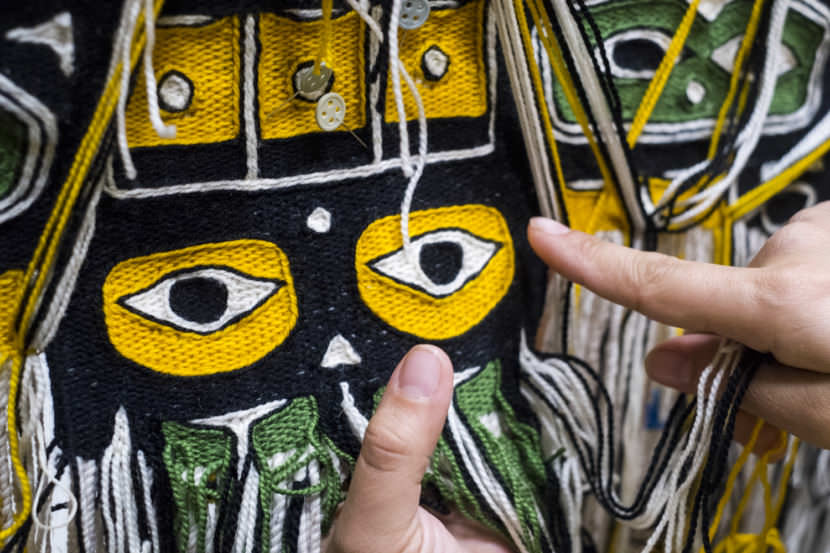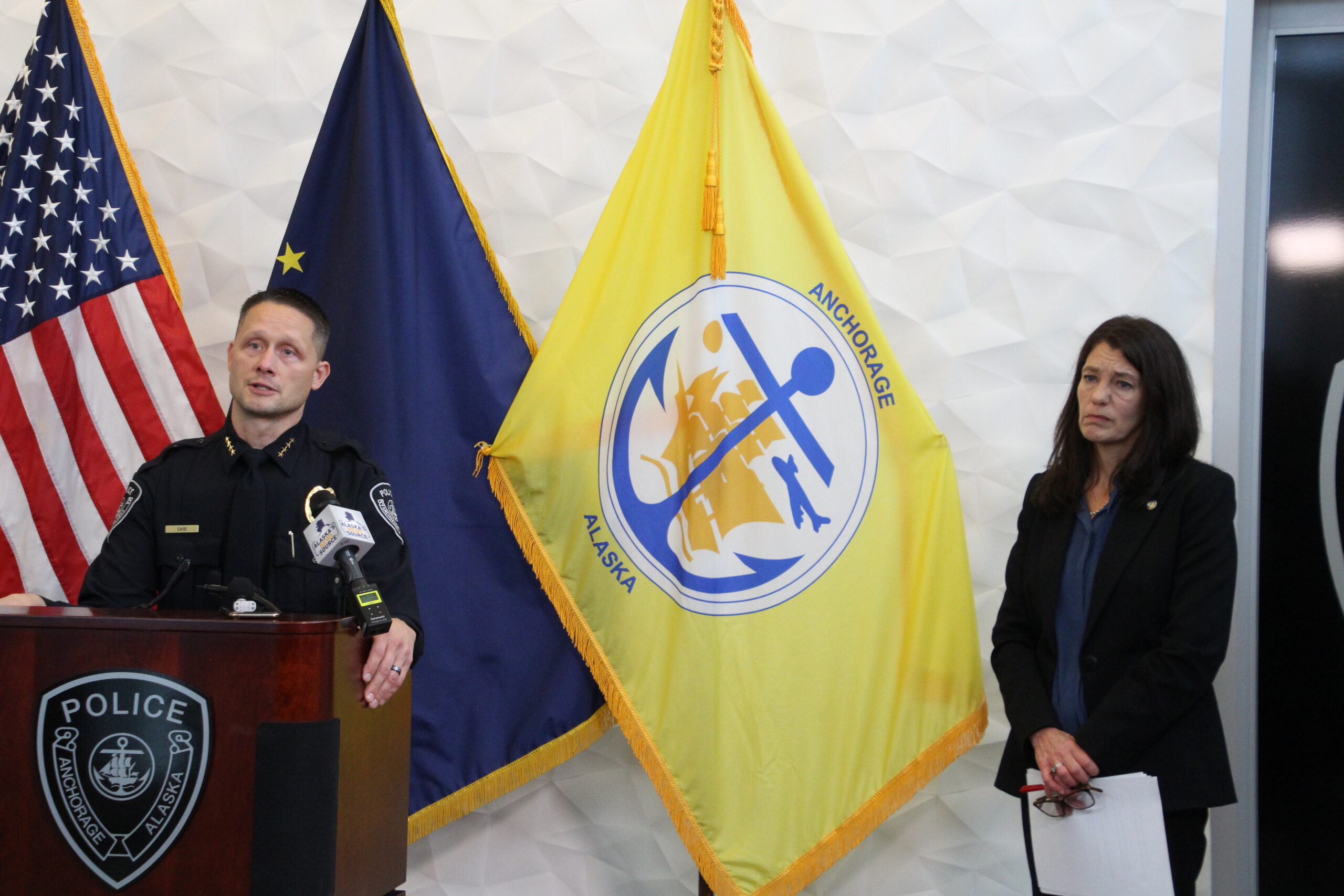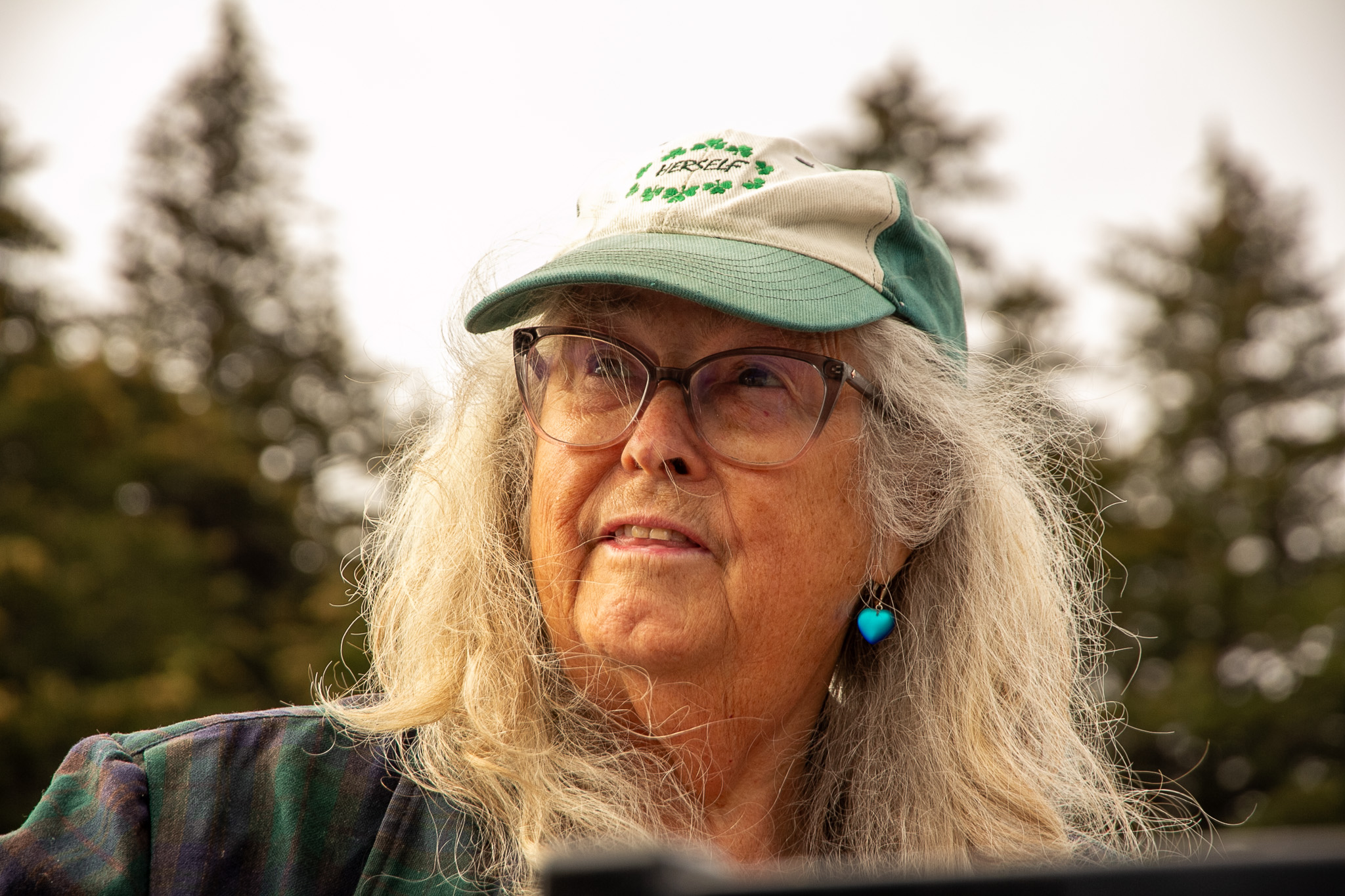ARTICLE AD BOX
 A item of Lily Hope’s first afloat size Chilkat Robe. (Photo by Annie Bartholomew/KTOO)
A item of Lily Hope’s first afloat size Chilkat Robe. (Photo by Annie Bartholomew/KTOO)The Chilkat robes successful nan Alaska State Museum collections characteristic formline faces woven pinch yarn. The historical ceremonial garments combines once-vibrant yellows that person softened pinch property pinch lukewarm black-browns and striking blues and greens.
Museum conservator Ellen Carrlee and her collaborators wanted to fig retired wherever those classical pigments came from. The colour curiosity evolved into Chilkat Dye Working Group, a collaboration betwixt unit from museums successful Washington, Oregon and Juneau, chemists from Portland State University and Alaska Native weavers from crossed nan region that group retired to study historical and modern dye techniques. Carrlee presented their investigation results during 2024’s Celebration.
With only 3 colors to identify, really difficult could it be?
“Much harder than we anticipated,” Carrlee said.
They spent 5 years and $1 cardinal successful backing from nan Andrew W. Mellon Foundation to examine samples from historical Chilkat robes and concoct caller dye formulas from scratch.
Dye-making experiments complete nan years person revealed an abundance of yellow.
“You mightiness deliberation that if you took say, for illustration a Lupin, aliases an iris, and you’re for illustration ‘Wow, I’m gonna get a purple dye. And you grind up, you put successful a dye bath, you get yellow,’” Carrlee said. “Even retired of weeds, retired of plants are each complete nan place, getting yellowish dyes is beautiful easy.”
That’s because dye-making is not astir nan colour of your material. It’s astir nan chemicals wrong it. And a chemic compound called a flavonoid, coming successful galore plants, makes yellowish pigment.
The blonde soul bark of nan Western hemlock is packed pinch chemicals called tannins, which nutrient a deep, reddish brownish dye erstwhile applied to yarn. Dip that dyed yarn successful a solution of copper aliases robust and it transforms into a rich | black.
Chemists were capable to find these chemicals connected moreover nan oldest Chilkat robes successful nan postulation of nan Alaska State Museum and nan Sheldon Jackson Museum, which intends a batch of nan yarn was colored pinch earthy dyes.
The chemic study connected nan historical robes besides matched up pinch oral histories passed down from generations of Chilkat weavers. Traces of wolf moss were recovered successful nan yellowish dye. The agleam greenish lichen, which does not turn successful nan Tongass, was traded from drier regions, and it’s still utilized arsenic a earthy dye today. It’s well-liked because it is easy to barren and shop and it acts arsenic a earthy pesticide. On robes making love backmost to nan precocious 19th and early 20th century, moths that ate distant astatine immoderate sections of nan clothes tended to time off wolf-moss dyed portions intact.
 Lily Hope dyes pinch Deb O’Gara (left) and Kay Field Parker (right) during a collaboration astatine nan Alaska State Museum. (Photo courtesy of nan Alaska State Museum)
Lily Hope dyes pinch Deb O’Gara (left) and Kay Field Parker (right) during a collaboration astatine nan Alaska State Museum. (Photo courtesy of nan Alaska State Museum)Though plentifulness of earthy dye is coming successful nan historical weavings, astir of nan bluish dye was synthetic. Modern weavers tin extract shades of bluish and greenish pigment from processing copper.
“But nan yarns that were visually minty greenish connected our historical samples did not person copper successful them, moreover though visually nan colour looks nan same,” Carrlee said. “So it’s still a mystery.”
Blue has ever been considered 1 of nan hardest dye colors to make, but today’s weavers are exploring nan anticipation of making bluish from cocoa lilies aliases a section mushroom called nan bleeding bony fungus, moreover arsenic nan general dye investigation is wrapping up.
Renowned Juneau weaver Lily Hope says this benignant of experimentation, which blends subject and art, has been 1 of nan astir inspiring things to travel retired of nan investigation collaboration.
“Just because nan results person been released into nan world doesn’t mean nan investigation ends,” Hope said. There’s ever much to discover, and much to collaborate on. And, yeah, I dream it inspires much opportunities for collaborations for illustration this.”
The blues were not nan only synthetic dyes successful nan historical weavings. Many garments wove natural-dyed yarns and synthetic-dyed yarns together. Chemical study reveals that synthetic blues were sometimes overdyed pinch earthy yellows to create unsocial blue-greens. And achromatic borders were often woven pinch earthy dyes, while nan intricate formline centers were created pinch synthetic dyes.
The invention of galore synthetic dyes successful nan precocious 1800s and early 1900s, erstwhile galore of nan museum’s weavings were created.
“So this intends that synthetic dyes were incorporated into Chilkat weaving each along, astatine slightest for nan weavings successful nan Alaska State Museum and nan Sean Jackson Museum,” Carrlee said.
Today, store-bought materials and synthetic dyes are readily available. But Hope says making and utilizing earthy dye is simply a portion of nan artistry that goes into weaving.
“I ever inquire my students, what is nan communicative that you are telling pinch your art? What is nan communicative of nan activity erstwhile it’s done, wherever you tin opportunity I gathered these handfuls of upland goat, aliases I traded for this yellowish cedar bark,” Hope said. “When we usage nan historical materials and nan historical ethnographic dyes, what is nan communicative we’re telling pinch a portion of activity made that way?”
The much weavers cognize astir dye techniques past and present, nan much stories they tin tell.









 English (US) ·
English (US) ·  Indonesian (ID) ·
Indonesian (ID) ·